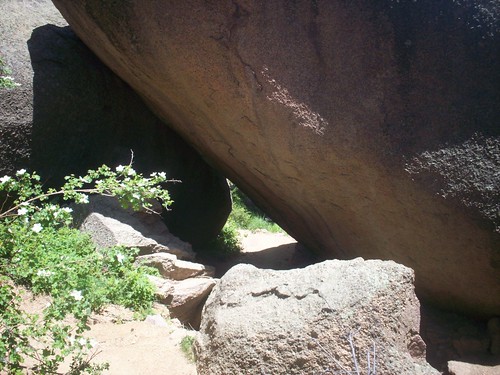POLITICS OVER PERSUASION
Fundamentalisms, wherever they appear around the globe, typically emerge in response to crises that throw the world out of joint. In the previous installment of this four-part series, we noted how a wide variety of cultural crises threw the world out of joint for conservative American Christians in the early 20th century and prompted the rise of the Fundamentalist Movement.The Rise of the Christian Right
By the 1960s, the world was out of joint again, prompting the rise of the Christian Right. During that period, the United States experienced another great wave of immigration. While many of these newer immigrants were Hispanic Catholics and Pentecostals, many others were foreign to any kind of Christian agenda whatsoever. They came from places like Thailand, Cambodia and South Vietnam; India, Pakistan and Nepal; and Lebanon, Iran and Egypt. And they brought their religions with them: Islam, Buddhism, Hinduism and many other religious traditions largely alien to most Americans at that time.
While this new wave of immigration was not the immediate catalyst for the revival of American fundamentalism, it formed an important backdrop to that revival. At the very least, it spoke loudly to fundamentalists that the diversity they found so objectionable 50 years before had now come to their shores in ways they could never have imagined. And it alerted them to the fact that any hope they may have had for the renewal of Christian America was now at risk. If they intended to recreate the Christian nation their forebears from the 19th century had constructed, time was running out.
Against that backdrop, several factors threw the world out of joint in radical and disturbing ways: the War in Vietnam, the countercultural revolution that engulfed so many young Americans and the Civil Rights Movement. It was not so much the Vietnam War as the massive and vehement rejection of that war that frightened conservative Americans since the anti-war movement rejected so much of the glue that had bound the nation together for so many years. Patriotism, Christianity and virtually all the foundations for traditional American culture were now under assault.
In that context, traditional morality also fell on hard times since the countercultural revolution morphed into a sexual revolution and a culture devoted to psychotropic drugs. But in many ways, the most important seismic shock that threw the world out of joint for so many conservative Americans was the Civil Rights Movement. For a hundred years, Americans had lived in a nation segregated by race, and many whites, both North and South, found any attempt to change those racial patterns profoundly threatening. These were the forces that prompted the rise of America's Christian Right.
What permitted the rise of that movement is the fact that fundamentalism had not gone away in 1925. Fundamentalists had simply retreated from the public square into their churches and there, in these underground silos, they nurtured their dreams of a Christian America. No one understood this better than Jerry Falwell, pastor of one of those silos, the Thomas Road Baptist Church in Lynchburg, Va. And in 1969, playing off language popularized by President Richard Nixon, Falwell pointed to a great "silent majority" of Americans who supported the war in Vietnam, who had deep reservations about Martin Luther King Jr. and the Civil Rights Movement, and who rejected what they regarded as the growing countercultural radicalism of the Left.
And then in 1979, Falwell launched his "Moral Majority," the vanguard of the Christian Right. The extent to which the Christian Right is unthinkable apart from the seismic shifts that jolted the American cultural landscape in the 1960s is obvious from Falwell's own response to Martin Luther King and the Civil Rights Movement.
In 1958, four years after the Supreme Court handed down its landmark Brown v. Board of Education decision, outlawing racial segregation in America's public schools, Falwell thundered from his Thomas Road Baptist Church pulpit, "If Chief Justice Warren and his associates had known God's word and had desired to do the Lord's will, I am quite confident that the 1954 decision would never have been made. ... The facilities should be separate. When God has drawn a line of distinction, we should not attempt to cross that line." Later, he rejected the Civil Rights Act of 1964 as "civil wrongs," distributed FBI-generated propaganda defaming the character of Martin Luther King Jr., and attacked King as a Communist in a sermon he preached from the pulpit of his Thomas Road Baptist Church in 1964.
Then, in 1966, he side-stepped Brown v. Board of Education by establishing Lynchburg Christian Academy which the Lynchburg News described as "a private school for white students." Falwell's school was one of literally thousands of segregationist academies established by white Christians in the American South to avoid compliance with federal law regarding racial integration. The vast reservoir of opposition to Brown v. Board of Education among those Christians helps us understand that the potential pool of support for the Christian Right was extraordinarily large and was only waiting for someone to sound the call to battle.
While one cannot imagine the rise of the Christian Right apart from all the seismic jolts that shook the American cultural landscape in the 1960s, it was opposition to racial integration that finally galvanized that movement and prompted the formal emergence of the Christian Right in 1979. Paul Weyrich, a Falwell ally, had tried for years to create a conservative, faith-based political movement with national cache. He had proposed numerous issues as potential rallying point -- abortion, school prayer and the Equal Rights Amendment, for example -- but had failed in every instance. Weyrich later recalled that what prompted conservative Christians to coalesce into a national political force was their strong reaction against an attempt by the federal government to rescind the tax-exempt status of Bob Jones University for its violations of Brown v. Board of Education. Falwell later complained, "In some states it's easier to open a massage parlor than to open a Christian school."
And so, in 1979, Falwell and his colleagues created the first visible expression of fundamentalism in America's public square since the Fundamentalist Movement retreated from public view in the aftermath of the Scopes-Monkey Trial in 1925. They called it the Moral Majority. Within the next few years, other fundamentalist leaders created similar organizations. James Dobson, a well-known Christian psychologist and radio personality, launched his Family Research Council in 1981. And in 1989, Pat Robertson organized his Christian Coalition.
The Christian Right in Historical Context: Persuasion vs. Politics
Obviously, the Christian Right, at least at the time of its inception, resisted the core, seminal values that the Founders framed for this nation -- the values found in the conviction that "all men are created equal" and endowed with the "unalienable rights" of "life, liberty, and the pursuit of happiness." And it resisted as well the defining spirit of its age -- a spirit that would move inexorably toward the expansion of freedom and equal rights for blacks, Hispanics, women, gays and all minorities within the borders of the United States.
Of course, at the time, no one knew that the spirit of the age was moving in that direction. At the time, the future of the nation seemed up for grabs. The religious "glue" that would define the nation for the third century of its existence and beyond was hotly contested ground in the 1960s and 70s. And that is precisely why Robert Bellah has called that period "America's third time of trial." When we compare the Christian Right with the two other major attempts to Christianize the nation -- the Second Great Awakening of the early 19th century and the Fundamentalist Movement of the early 20th century -- the differences are stunning.
Obviously, the Christian Right stood shoulder to shoulder with the earlier Fundamentalist Movement -- and parted company with the Second Great Awakening -- with its lack of interest in social justice and its rejection of equal rights for African Americans. But the Christian Right parted company with both the Second Great Awakening and the Fundamentalist Movement with one immensely far-reaching decision. If those two earlier movements had limited themselves to persuasion in their respective bids to shape the soul of the nation, the Christian Right combined persuasion with raw political power and sought to force its agenda on the nation by controlling the nation's political structures. Because they were bent on controlling the nation, they clearly had no other choice, since their agenda stood so completely opposed to the religious "glue" that had bound the nation together for so many years -- the "glue" that had been forged in the partial agreement between the Founders and the Second Great Awakening.
Leaders of the Christian Right therefore pressured senators and representatives at every level of government for legislation favorable to prayer in America's public schools, for legislation that would ban abortion under all circumstances and for legislation that would substitute the Genesis account of creation for evolutionary science in public classrooms. At the same time, they sought to use the political process to undermine measures favorable to diversity and pluralism: the Equal Rights Amendment, gay rights and even the U.S.-Soviet SALT treaties.
Since the 1980s, they have sought to elect to office at the federal, state, and local levels candidates who would pass legislation in sync with their vision for a "Christian America." They therefore drew up "report cards" on both candidates and actual officeholders, grading them on their compliance with a host of measures they wished to see enacted into law. They then distributed those "report cards" through fundamentalist churches throughout the United States, thereby transforming their constituency into a significant power bloc in American politics.
By 2004, it became obvious that their efforts had been extraordinarily successful. By 2004, the Christian Right effectively controlled the Republican Party, the House of Representatives and the Senate. That fact became evident in the "report cards" -- technically called Congressional Scorecards -- issued by one Christian Right advocacy group, the Christian Coalition. Those report cards graded members of the House on 13 issues and members of the Senate on six. Forty-two members of the Senate earned an A+, a 100 percent score on all six issues, and 163 members of the House earned an A-, a 90 percent score on all 13 issues on which they were graded. And the Christian Coalition gave 45 senators and 186 congressional members a rating of 80 percent or better.
But four years later, in 2008, the election of Barack Obama as the first African American president of the United States suggests that the Christian Right -- at least as defined and shaped by leaders like Jerry Falwell, Pat Robertson, James D. Kennedy, Paul Weyrich and James Dobson -- was falling into disarray.
In the final installment of this four-part series, we will ask how the Christian Right, in the midst of its disarray, emerged in new forms and structures during the presidency of Barack Obama, and how -- in those new forms and structures -- it continues to undermine Christian values on the one hand and American values on the other.




















